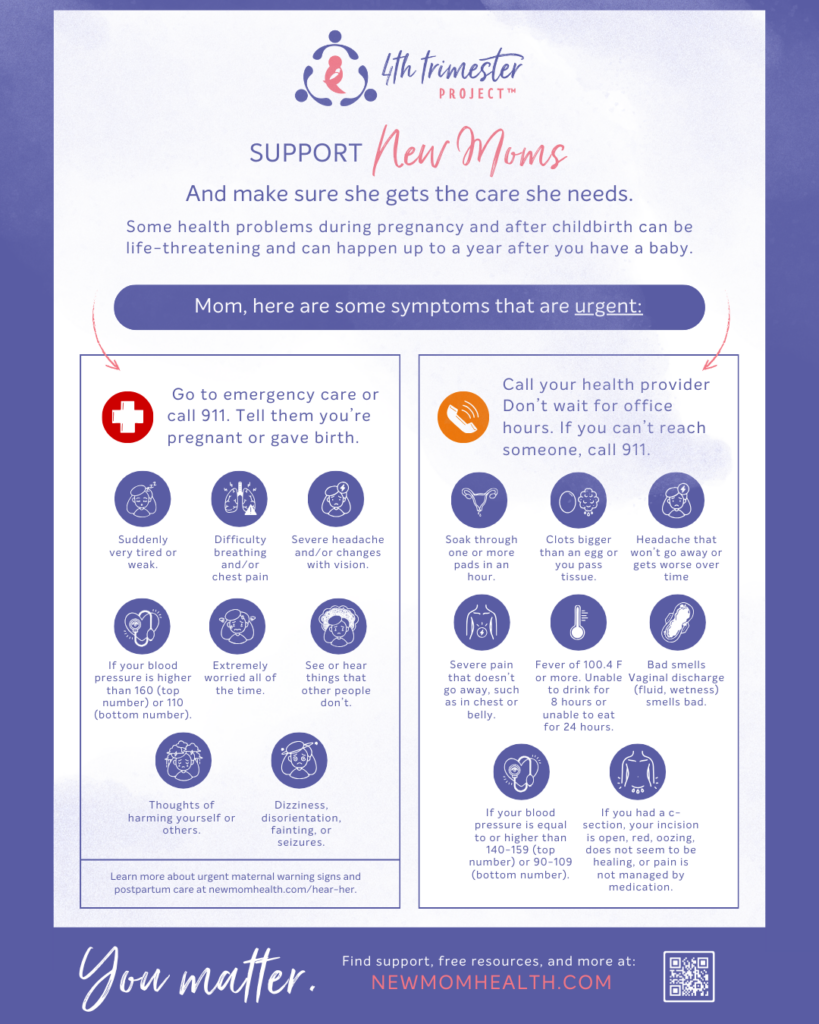
A c-section is major abdominal surgery and it will take time to recover. A number of nerves are cut during the procedure, and it can take up to six months for all of the nerves in the abdominal area to heal completely. Some women continue to experience numbness, tingling and odd shooting pains around their scar for months after delivery. Some women feel fine after just a few weeks and others take two to three months to feel ‘normal’.
While some movement is important, moms who have had c-sections need extra rest and care to heal. Taking regular doses of acetaminophen (Tylenol) and ibuprofen can help. If you’re still in significant pain, talk with your provider.
Stronger medication (e.g. opioids) can be helpful if your pain is not controlled with acetaminophen and ibuprofen, but they can make you sleepy, nauseated (sick to your stomach) and constipated (hard to have a bowel movement). If you are still having severe pain two weeks after birth, please talk to your provider so he/she can see why you are still hurting. They can also be habit-forming. If you have had a problem with drug addiction in the past, please tell your provider so they can help you manage your pain in a way that is safe for you.
A small amount of opioid medication gets into breastmilk. When you are taking these medicines as prescribed, they are generally safe for your breastfed baby. If you notice your baby is not waking for feedings at least 8 times a day, call your baby’s provider right away. Many moms don’t need all the opioid pills they receive when they go home after c-section. Find out how to dispose of extra pills here.
Check your incision every day to make sure there are no signs of infection.
Contact your provider if:
- you notice red streaks around your incision
- it is red, swollen, tender or painful, warm to the touch;
- it is separated or draining fluid;
- if you have a fever above 100.4 F or 38 C
Some sympoms are urgent and considered a medical emergency. Be sure you know what to look out for and who to call if something isn’t right. Review the urgent maternal health warning signs here.
Women who have had a c-section should check in with their provider within the first two weeks after having a baby. If your provider has a secure messaging portal, you may be able to send a photo of your incision from your cell phone if you’re worried about it.
Follow the instructions from your provider about not lifting anything heavy. You shouldn’t be lifting anything heavier than your newborn. This can be especially challenging for women with toddlers at home. It is really important that the muscles have a chance to heal. Ask for help during this time!
Women often want to know when they can drive a car again. This varies from mom to mom – there’s not a one-size-fits-all answer. It’s not a good idea to drive if you have opioid pain medications, as these can make you sleepy. Before you go out for a drive, try sitting in the driver’s seat of your parked car. Buckle your seat belt, and try out whether you can push on the brakes and look over your shoulder comfortably. If you can, it’s reasonably safe to drive. Even so, if there’s someone else who can run an errand for you, and you’re not excited to do it, don’t rush it.
Things to do that might help
- Some women find that an abdominal binder helps reduce pain after a C-section. You can ask for one while you are at the hospital.
- Your abdominal muscle tone will take some time to recover. During the first few days postpartum you can press a folded towel or pillow over your abdomen when sitting up or you can turn one to your side to sit up. Take your time and breathe.
- Do what you can to avoid constipation. Drink plenty of water, move around as much as you can, and eat a balanced diet that includes fruits, vegetables, and fiber. A stool softener can help with constipation.
- Wash your hands before touching your incision.
- When you shower, it’s fine to let water and soap suds run over your incision. Rinse the area well, and pat dry.
- Keep your incision clean and dry. It may help to put a clean gauze pad over your incision, especially if the skin on your belly folds over the incision. Some moms find that it’s more comfortable to wear the mesh panties from the hospital to hold the gauze in place.
Additional Resources to Explore:
- Know the postpartum warning signs related to C-Section recovery
- For more, see “Bottom / Pelvic” section of our site
- ACOG’s “What Should I Expect During Recovery of a C-Section?”














